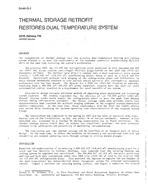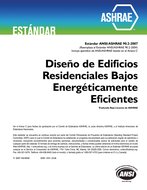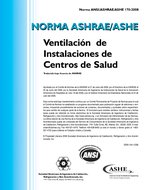Description
The integration of thermal storage into the existing dual-temperature heating and cooling system allowed it to meet the requirements of the expanded industrial manufacturing facility while at the same time restoring the system’s performance.
The existing 5000 ton (17,600 kW) refrigeration plant installed in 1971 included two 860 ton (3027 kW) steam turbine centrifugal chillers piggy-backed on two 1640 ton (5772 absorption chillers. The chillers were directly coupled into a dual-temperature water system serving a 1,600,000 ft2 (148,640 m2) manufacturing plant, which is is part of a truck and bus facility. Operational problems with staging of the refrigeration plant and difficulties in steam turbine operations resulted in only partial system operation and, consequently, marginal performance over the last decade. The demands for a 2000 ton (7040 kW) increase in capacity, resulting from a 900,000 ft2 (8B,610 m2) plant expansion, coupled with the need for close environmental control resulted in a requirement for total retrofit of the system.
Alternative design concepts evaluated methods of improving plant operations and increasing system capacity. The studies concluded that the addition of two 750,000 gallon (2842 m2) thermal storage tanks would enable the refrigeration plant to meet the peak load demands without adding refrigeration equipment. The thermal storage tanks also provided stable load characteristics that resolved the multiple staging problems of the original turbine/absorption chiller combination. At the same time, these requirements were met with the lowest capital cost option while retaining the optimum operating cost characteristics of the original system design.
The installation was completed in the spring of 1987 and has been in operation ever since. Capital cost of the installation, as bid, was within 5% of initial estimates. However, actual installed cost increased by a further 8% during construction due to field conditions. The thermal storage system itself went in without any significant problems, the most prevalent problems being calibration and sensitivity of monitoring instrumentation.
The conclusions are that thermal storage can be justified as an integral part of system design. At the same time, it offers the benefits of increased plant operational stability and reliability and reduced operating costs through savings in utility demand charges.
Units: Dual
Citation: Symposium, ASHRAE Transactions, 1988, vol. 94, pt. 1, Dallas, TX
Product Details
- Published:
- 1988
- Number of Pages:
- 13
- File Size:
- 1 file , 5 MB
- Product Code(s):
- D-DA-88-25-2




